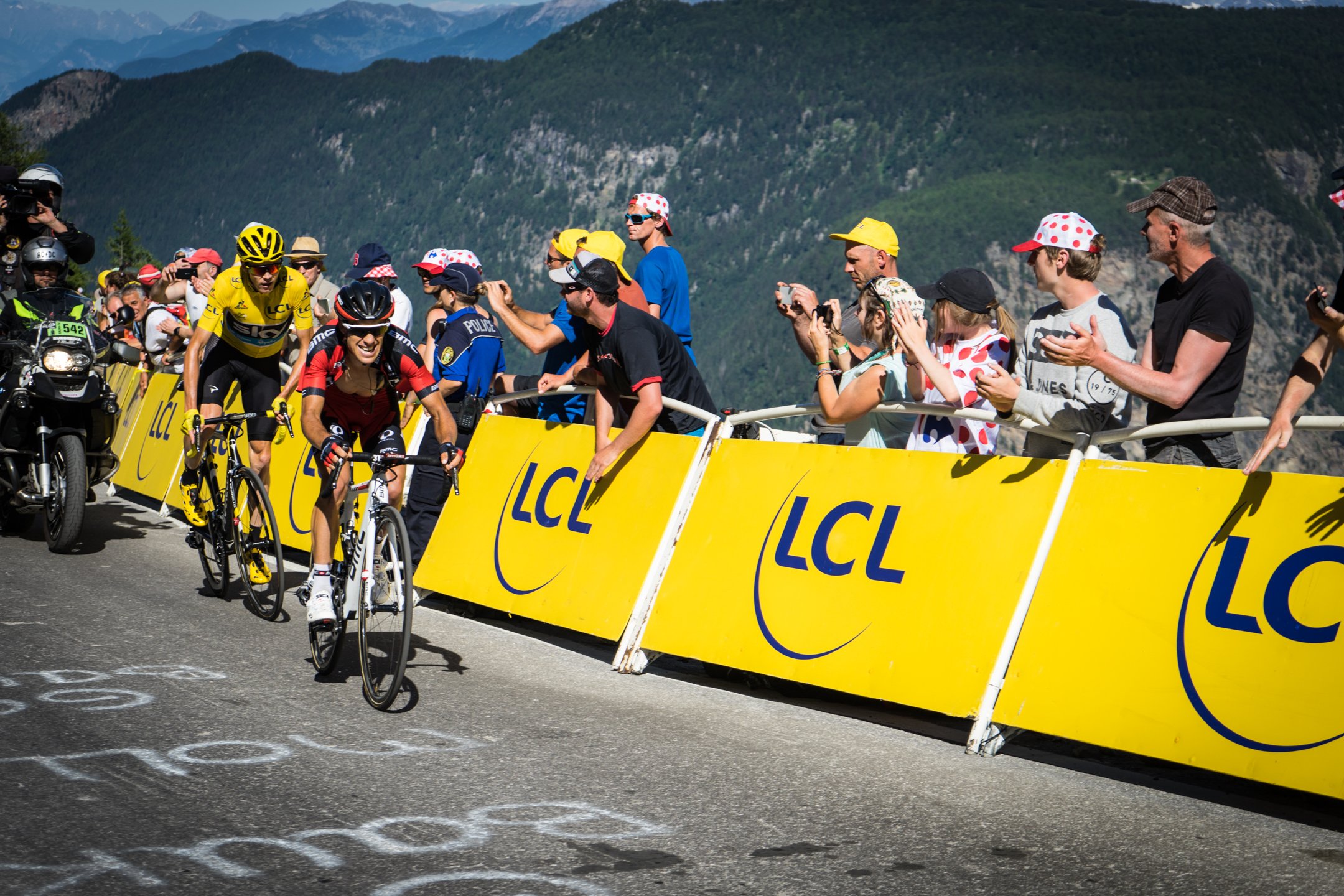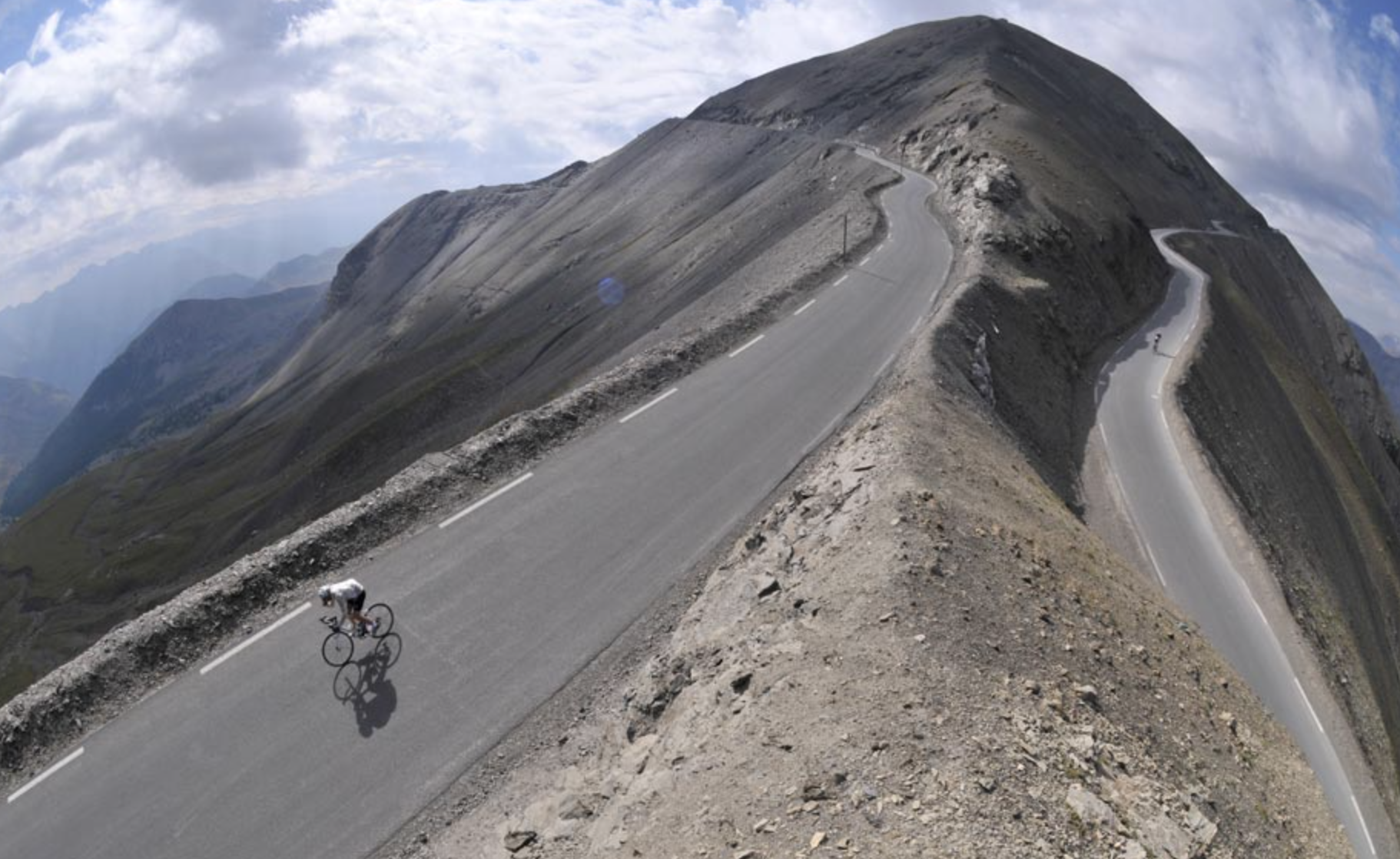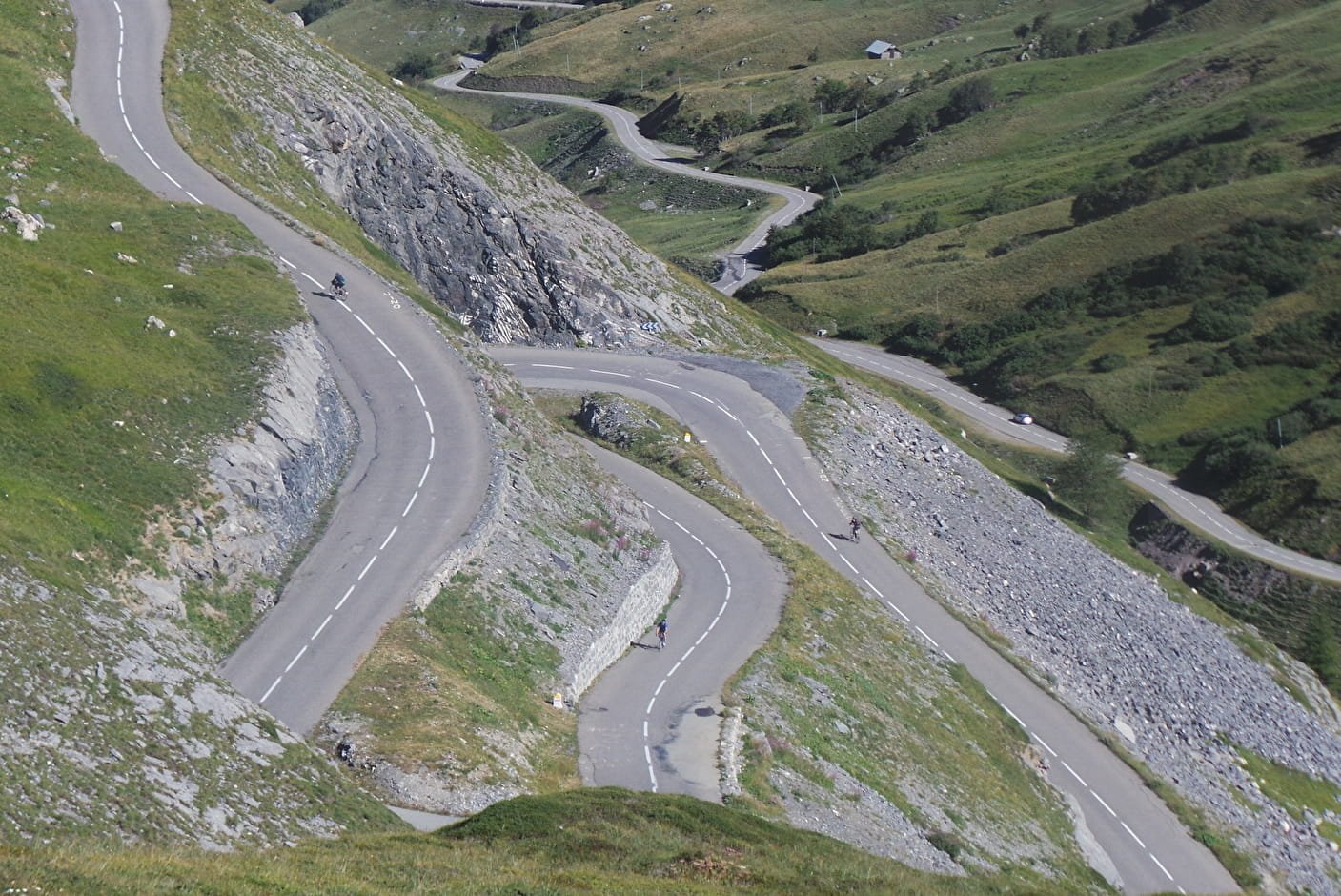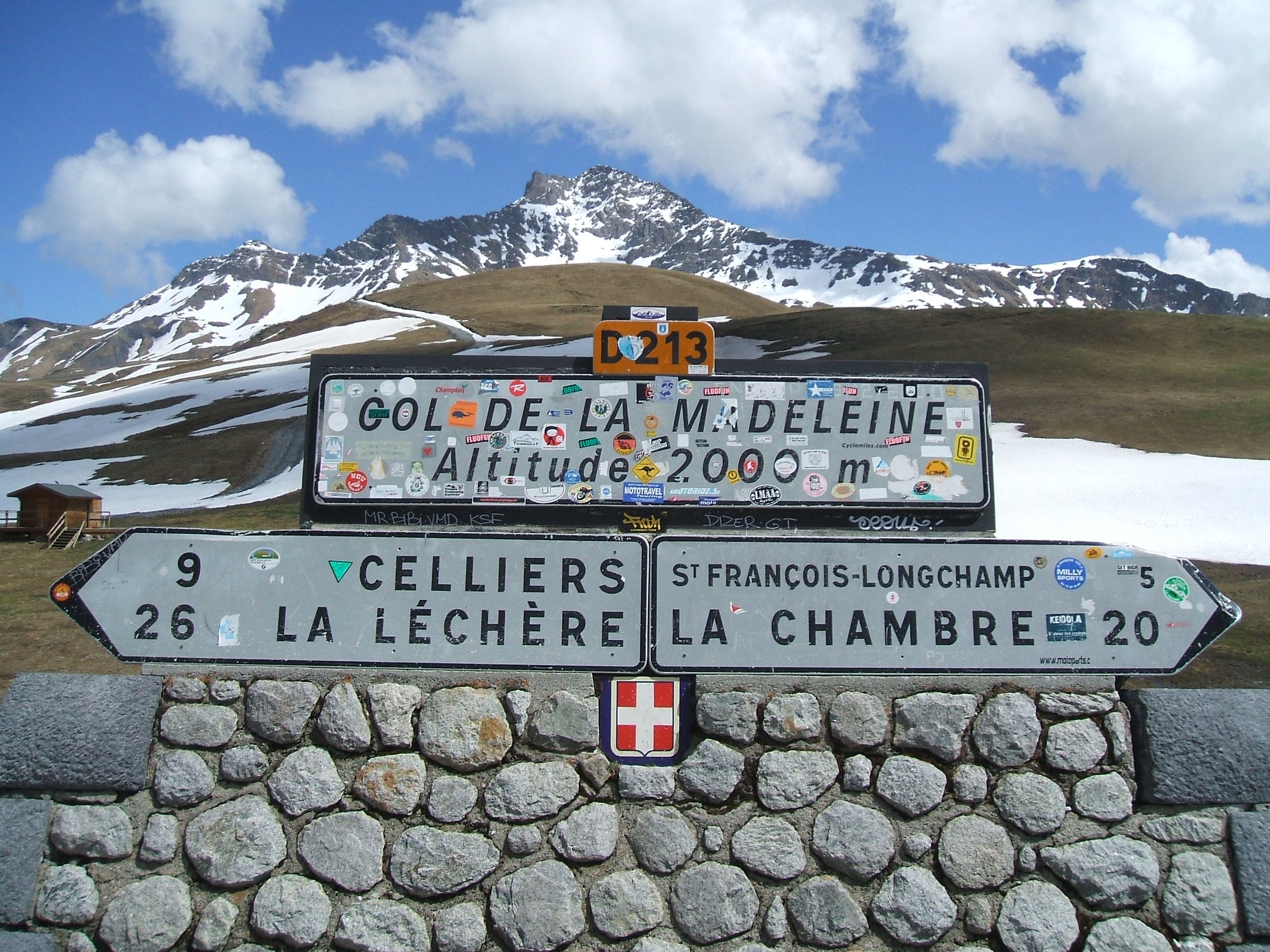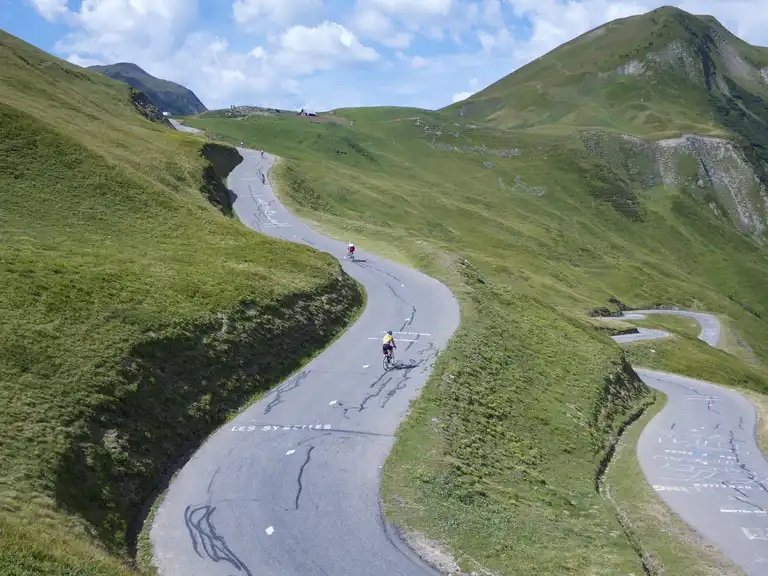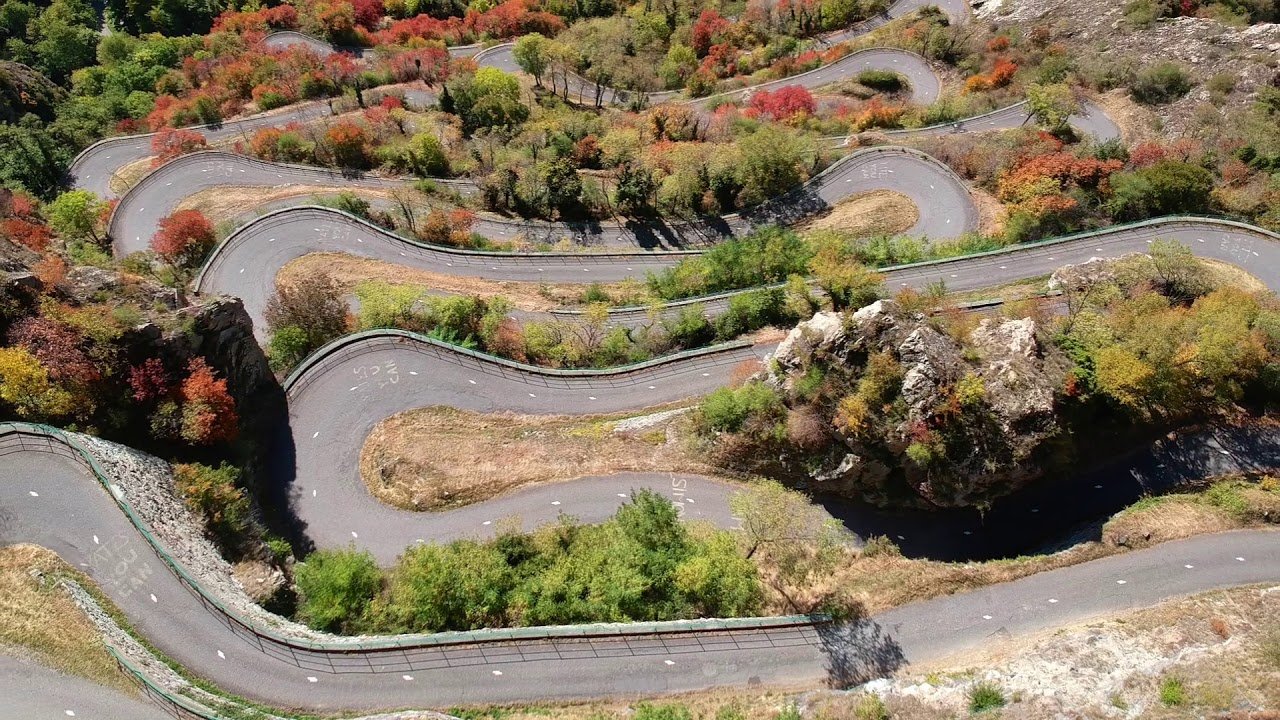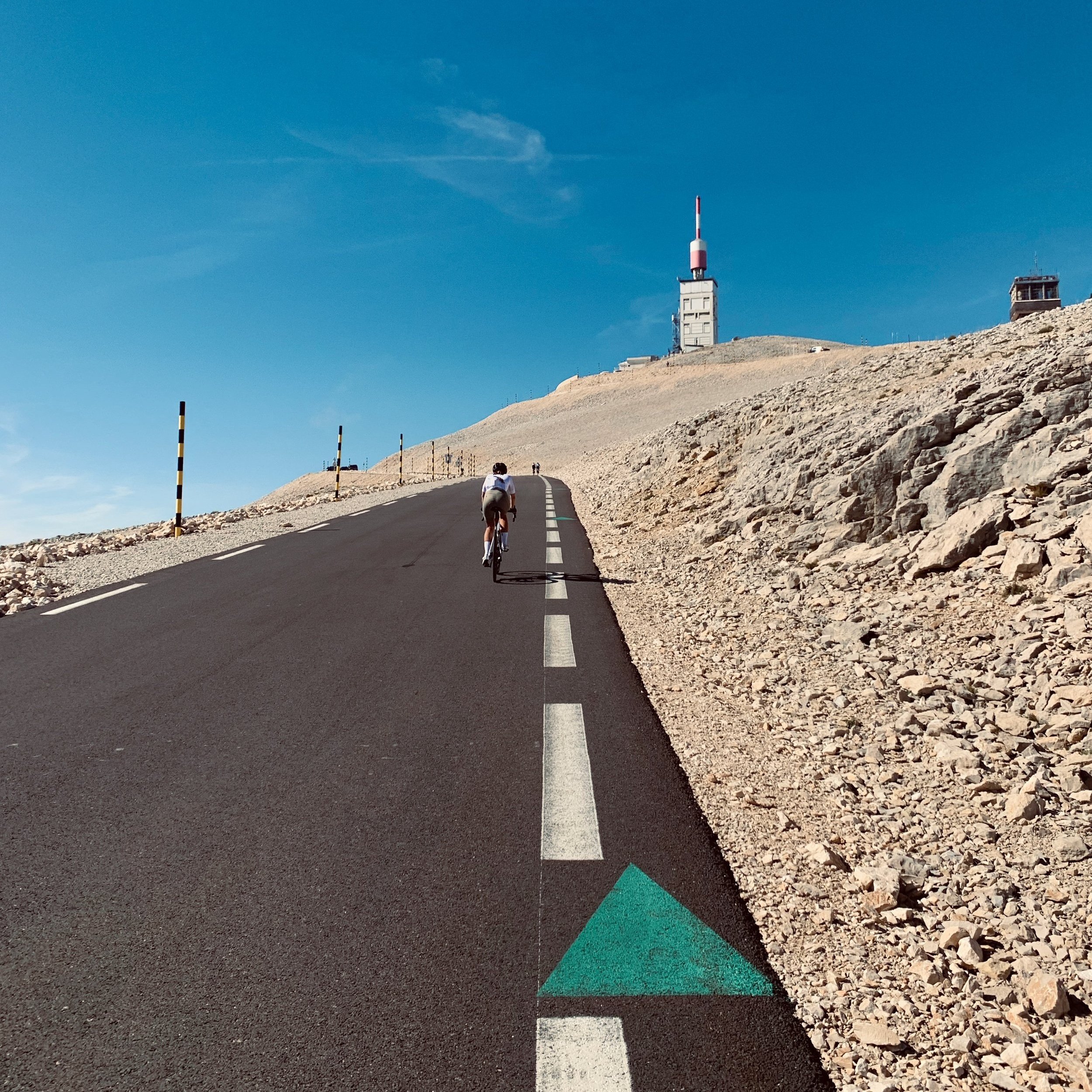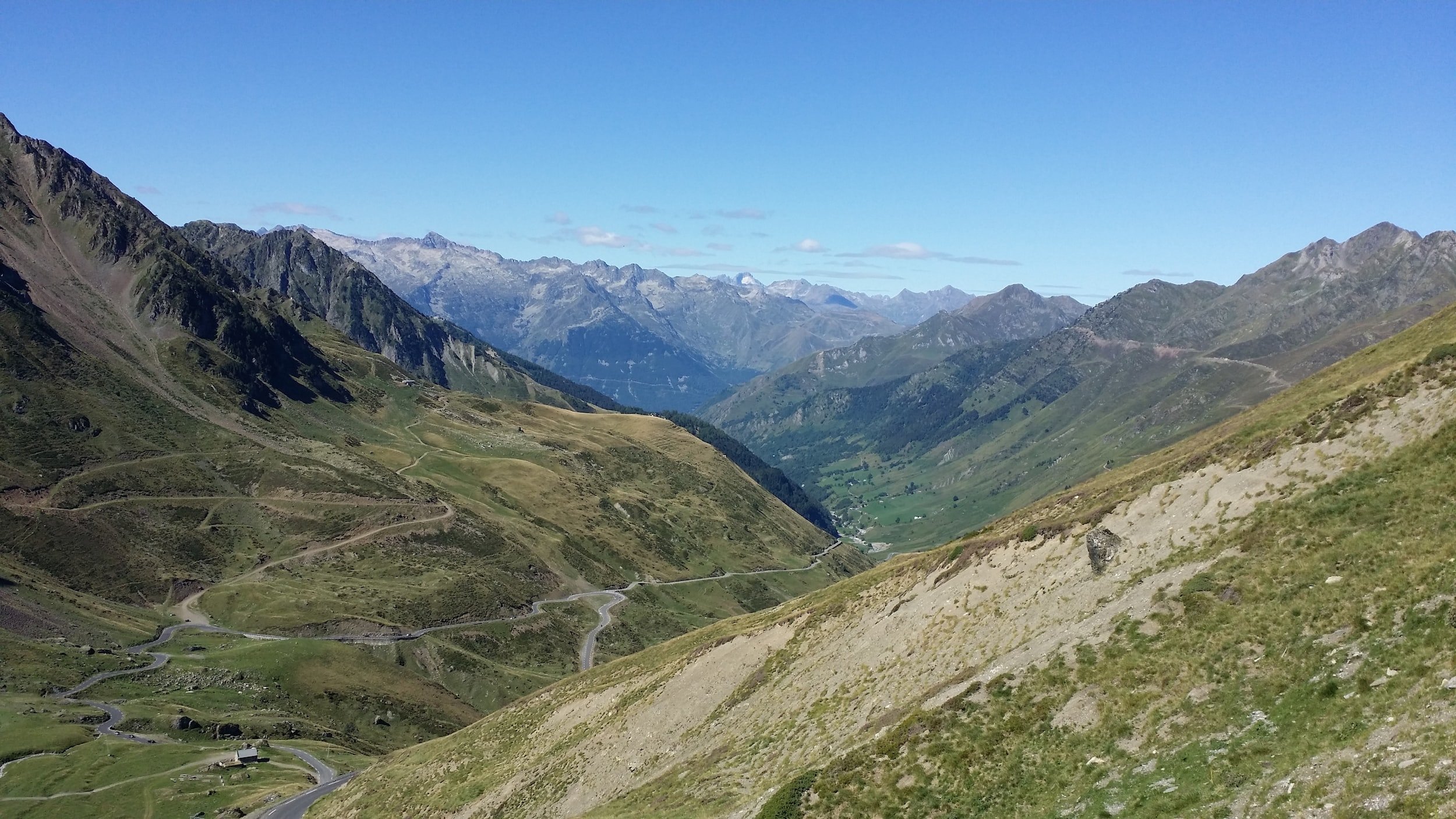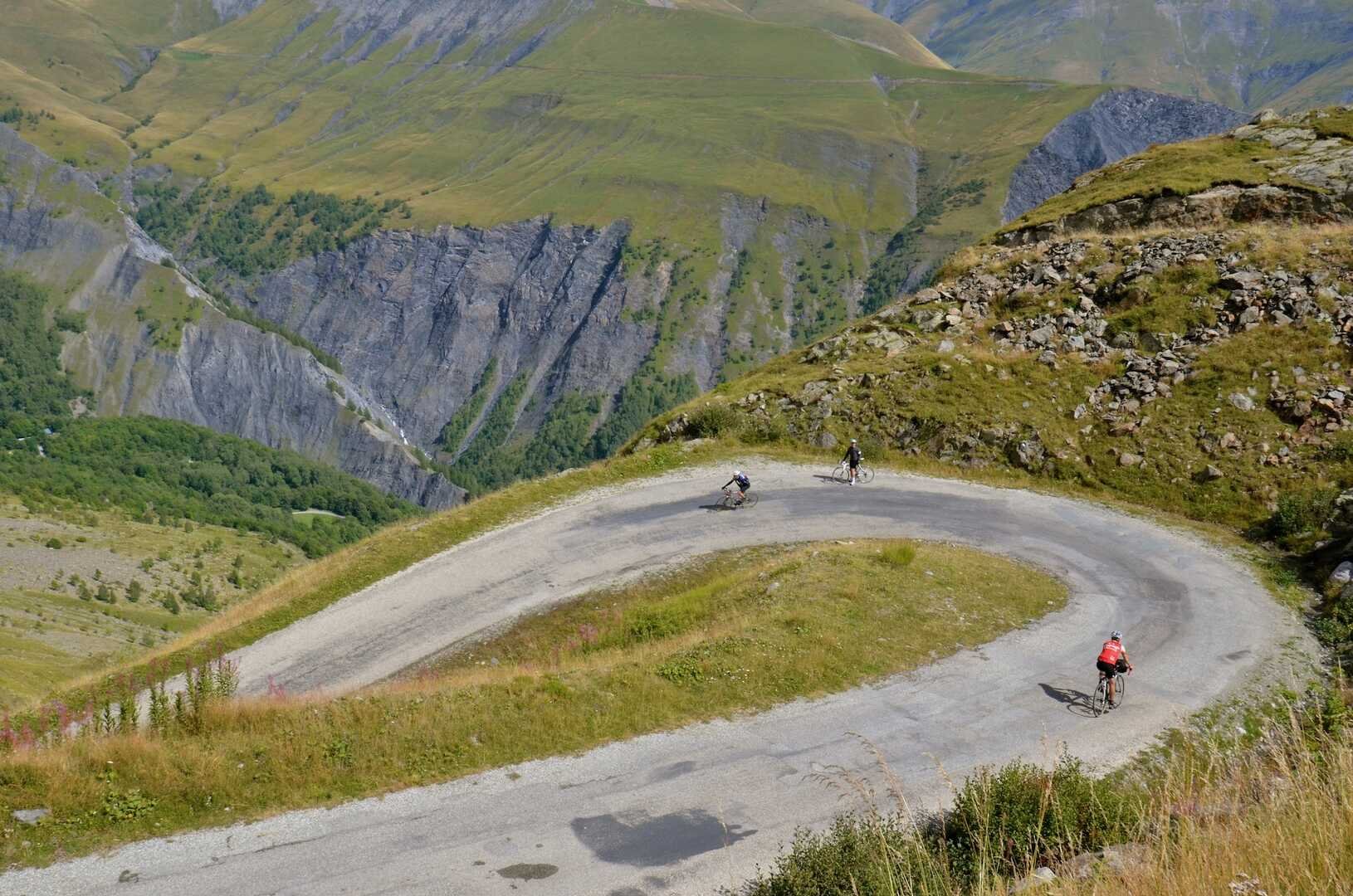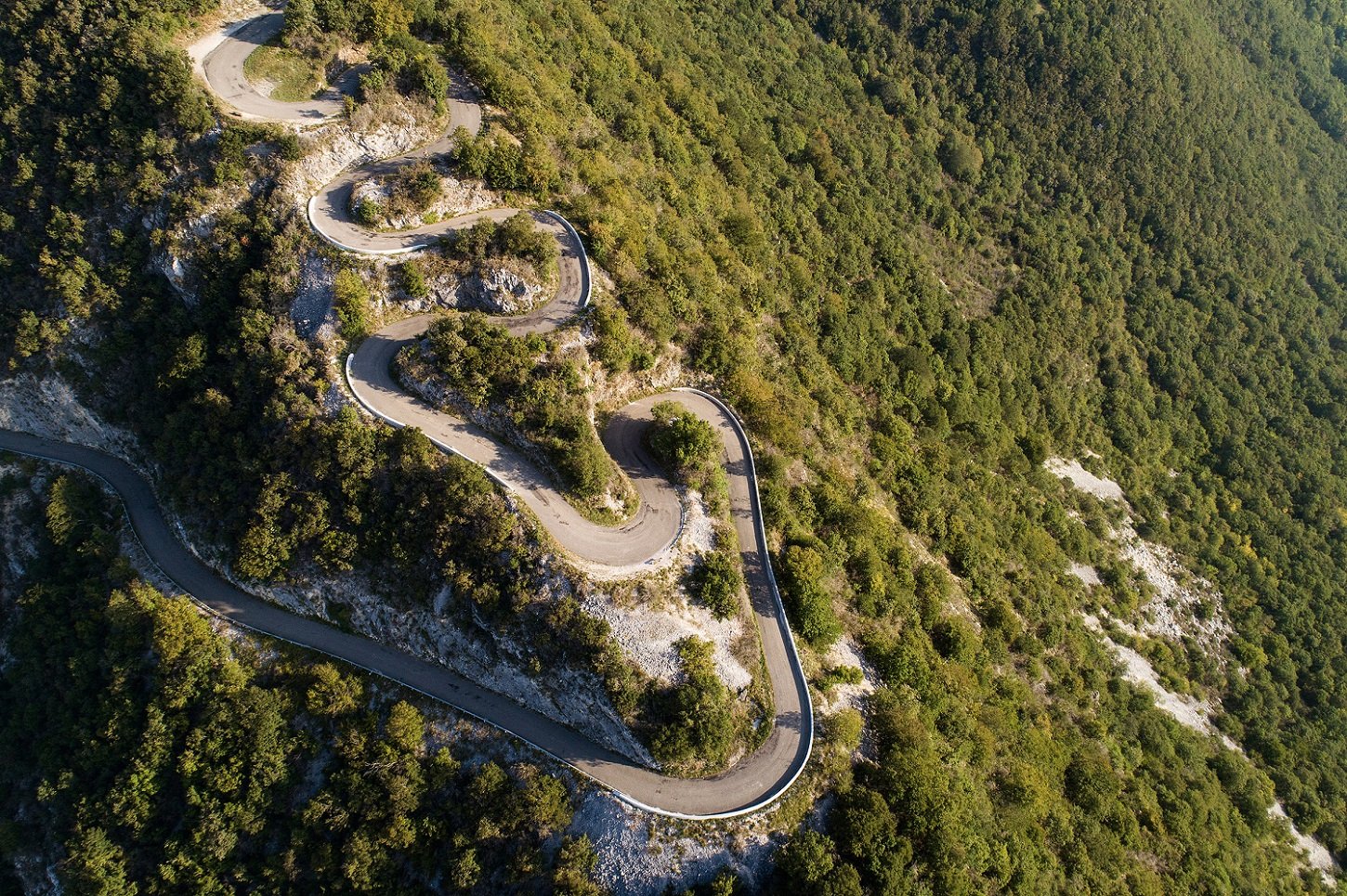The 12 most famous mountain passes of Le Tour de France
The Tour de France is one of the most prestigious and gruelling sporting events in the world. Every year, the best cyclists from all over the globe come to France to compete in this iconic race. And while the race has changed a lot since its inception over a hundred years ago, one thing remains the same: the challenge of biking up mountain passes.
In this blog post, we list 12 of the most famous mountain passes of Le Tour de France. From the Col du Galibier to the Col de la Loze, these are some of the most daunting and beautiful sections of the race.
Col de la Bonette-Restefond
The Col de la Bonette-Restefond is one of the most iconic mountain passes of the Tour de France. It's located in the French Alps and has an elevation of 2,802 meters. The Col de la Bonette-Restefond is often considered to be one of the most difficult stages of the Tour de France, due to its high elevation and steep grades.
The Col de la Bonette-Restefond first appeared in the Tour de France in 1922 and has been included in a total of 18 Tours. In recent years, it has become a popular destination for road cycling enthusiasts from all over the world.
If you're looking for a challenge, tackle the Col de la Bonette-Restefond on your next road cycling adventure!
Col du Galibier
The Col du Galibier is one of the most famous mountain passes in the Tour de France. It is located in the French Alps and is often considered to be one of the most difficult stages of the race. The Col du Galibier was first used in the Tour de France in 1911 and has been included in the race almost every year since.
The Col du Galibier is 21km long and has an average gradient of 7.5%. The highest point of the pass is 2,642m above sea level. The Col du Galibier is usually climbed from the south side, starting in the town of Saint-Michel-de-Maurienne. The climb is relatively gentle for the first 12km before it starts to get steeper. There are a few brief flat sections but these are generally followed by steep gradients again.
The Col du Galibier has been used in some memorable moments in Tour de France history. In 2011, Cadel Evans became the first Australian to win the Tour de France after he attacked on the Col du Galibier and took the lead from Andy Schleck. In 2013, Chris Froome also won on the Col du Galibier after attacking his rivals on the final climb to take victory.
Col d'Izoard
The Col d'Izoard is one of the most famous mountain pass of the Tour de France. It is located in the Hautes-Alpes department in southeastern France. The pass is 2,360 meters (7,740 ft) high and was first used in the Tour de France in 1922.
The Col d'Izoard is a popular destination for road cyclists and has been featured in several notable races, including the Criterium du Dauphine and the Tour de l'Avenir. The pass has also been used in the Vuelta a Espana and the Giro d'Italia.
Col de la Madeleine
The Col de la Madeleine is one of the most famous mountain passes in the Tour de France. It is located in the Savoie region of France and is part of the Alps mountain range. The pass has been used in the Tour de France a total of 33 times, first appearing in the race in 1950. The most recent appearance was in 2014, when Vincenzo Nibali won stage 14 after attacking on the descent from the Col de la Madeleine.
The Col de la Madeleine is a long and difficult climb, with an average gradient of 7.5%. There are two main routes to the summit, both of which are over 20km in length. The eastern approach is shorter but steeper, while the western approach is longer but with a gentler gradient. Whichever route is taken, the Col de la Madeleine is sure to test even the strongest riders in the Tour de France peloton.
Col du Mollard
The Col du Mollard is a mountain pass in the French Alps. It is located in the Savoie department, between the villages of Saint-Jean-de-Maurienne and Mont-de-Lans. The col du Mollard is one of the most famous mountain passes of Le Tour de France because it has been used many times in the race, most recently in 2013.
The Col du Mollard is 2,638 meters (8,661 feet) high and is usually open from June to October. The road that goes over the pass is narrow and winding, with many switchbacks. There are often strong winds at the top of the pass.
When cyclists reach the top of the Col du Mollard, they are rewarded with spectacular views of the surrounding mountains.
Côte de Montvernier
The Côte de Montvernier is a 6.9 kilometer long climb in the French Alps, with an average gradient of 7.4%. It is located in the Savoie département, and its summit is at 1,600 meters above sea level. The Côte de Montvernier was first included in the Tour de France in 1911, and it has been used a total of 27 times since then.
The Côte de Montvernier is one of the most difficult climbs in the Tour de France, due to its length and steepness. It is often considered to be one of the decisive stages of the race, as it can make or break a rider's chances of winning. The climb typically comes near the end of the race, when riders are already tired from several weeks of racing.
In recent years, the Côte de Montvernier has been used as a launchpad for attacks by riders looking to take the overall lead in the race. In 2011, eventual winner Cadel Evans used the Côte de Montvernier to attack his rivals and take the yellow jersey. In 2015, Nairo Quintana used a similar strategy on the Côte de Montvernier to take the lead from Chris Froome and win that year's Tour de France.
Côte de Saint-Nizier-du-Moucherotte
The Côte de Saint-Nizier-du-Moucherotte is a mountain pass in the Isère department of southeastern France. The road over the pass is the D1075. It connects Grenoble in the Isère Valley with Vizille in the Drac Valley.
The Côte de Saint-Nizier-du-Moucherotte was used for the first time in the Tour de France in 1975. Since then, it has been used frequently, most recently in 2013. The climb is 8.3km long at an average gradient of 7.9%.
The Côte de Saint-Nizier-du-Moucherotte is a popular climb for cyclists training for major races such as Le Tour de France and La Vuelta a España.
Col de la Ramaz
Le col de la Ramaz is a mountain pass in the Haute-Savoie department of southeastern France. The road over the col is the D902. It was first used in the Tour de France in 1949, and has been used regularly since then.
At an elevation of 1,827 metres (5,978 ft), it is the highest point on the Col de la Ramaz. The pass is located between the villages of Morzine and Avoriaz, in the heart of the French Alps.
The Col de la Ramaz was first used in the Tour de France in 1949, and has been used regularly since then. It was climbed by Fausto Coppi during his victorious stage 13 of that year's race. The Italian rider went on to win the Tour overall.
The most recent Tour de France stage to finish at the top of the Col de la Ramaz was stage 18 of the 2011 edition, which was won by Jelle Vanendert of Belgium.
Le Mont Ventoux
One of the most famous mountain pass of Le Tour de France is undoubtedly Le Mont Ventoux. It's also known as "LE Géant de Provence.
This huge mountain looms over the Provence region in southern France and has been a regular fixture on the Tour de France route since 1951.
The climb up to the summit is long, tough and very exposed to the elements, making it a real challenge for the riders. It is considered one of the most iconic stages of the race and always attracts huge crowds of fans.
Col du Tourmalet
The Col du Tourmalet is a classic mountain pass in Le Tour de France. The pass is located in the French Pyrenees and is 2,115 meters above sea level. The first rider to cross the finish line at the top of the Col du Tourmalet was Frenchman Pierre Chanteur in 1910.
Since then, the Tourmalet has been featured 83 times in the Tour de France, more than any other climb. It was even included in this year's race, which took place from July 6-28.
The Tourmalet is known for its difficulty; it's a long and arduous climb that can take its toll on even the strongest riders. But it's also one of the most scenic routes in all of cycling, with stunning views of the Pyrenees Mountains.
Whether you're a fan of Le Tour or just a casual observer, there's no denying that the Col du Tourmalet is one of the most iconic mountain passes in all of cycling.
The Col de Sarenne (and the Alpe d’Huez)
The Col de Sarenne is is located in the French Alps and is known for its challenging routes and stunning scenery. The Col de Sarenne was first used in the Tour de France in 1902 and has been featured in the race numerous times since then. The most recent stage of the Tour de France that included the Col de Sarenne was Stage 18 in 2016.
The Col de Sarenne is a long, and windy mountain pass with an average gradient of 7%. The road snakes its way up through forests and meadows before opening up into sweeping views of the Alps. The final stretch to the summit is particularly steep, with grades reaching up to 12%.
Alpe d’Huez is another famous mountain pass of the Tour de France. It is located just below the Col de Sarenne and is also known for its challenging routes and stunning scenery. Alpe d’Huez was first used in the Tour de France in 1952 and has been featured in the race numerous times since then. The most recent stage of the Tour de France that included Alpe d’Huez was Stage 21 in 2017.
Alpe d’Huez is shorter than the Col de Sarenne but it has a much steeper average gradient of 8.6%. The road winds its way up through forests and meadows before opening up into sweeping views of the Alps. The
Col du Grand Colombier
One of the most famous stages of Le Tour de France is the Col du Grand Colombier. The Col du Grand Colombier is a mountain pass located in the Savoie region of southeastern France. It is one of the highest mountain passes in the Alps, with an elevation of 1,532 m.
The Col du Grand Colombier was first included in the Tour de France in 2012 and has been used regularly since then. It is often considered to be one of the toughest stages of the race due to its high elevation and steep grades.
Cyclists who are able to conquer the Col du Grand Colombier are considered to be true champions of Le Tour de France.
Conclusion
In conclusion, there is a reason why Le tour de France is one of the toughest road cycling events in the world but also one of the most beautiful.
These 12 mountain passes are the most famous, but they aren't the only iconic ones. Each one has their own unique challenges and is a great excuse to take your bike, head to France and start cycling up one of these beautiful uphill climbs.

